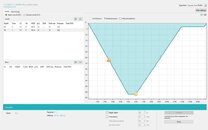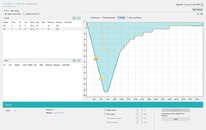Hello everyone!
Probably something that was discussed numerous times, but I really want to read the opinion of the experienced users here.
I decided to change my old Suunto HelO2 for a new Suunto Eon Steel - despite the controversial Suunto implementation of the RGBM, I felt very well with my HelO2 and the new Eon sounded like a reasonable upgrade.
Before I ordered the Eon I briefly read Suunto's superlatives about the Fused RGBM, but never actually tried to compare the two algorithms through Suunto's DM5 Planner.
Last week I went for some scuba diving and I was extremely surprised about the deco time I received after accomplishing a brief 65m touchdown on air. Please take a look at the profile at movescout: Slav_Landov's 0:51 h Scuba diving Move (you can see the ceiling by clicking on the button below the graph). I've got 30 minutes of decompression for what should be a quick no deco dive!
After the dive I tried to compare one an the same diving profile with Suunto DM5, but using the two different algorithms. The dive time with the Fused RGBM is indeed more than twice longer than with the Tech or regular RGBM!
Am I missing something?!
Probably something that was discussed numerous times, but I really want to read the opinion of the experienced users here.
I decided to change my old Suunto HelO2 for a new Suunto Eon Steel - despite the controversial Suunto implementation of the RGBM, I felt very well with my HelO2 and the new Eon sounded like a reasonable upgrade.
Before I ordered the Eon I briefly read Suunto's superlatives about the Fused RGBM, but never actually tried to compare the two algorithms through Suunto's DM5 Planner.
Last week I went for some scuba diving and I was extremely surprised about the deco time I received after accomplishing a brief 65m touchdown on air. Please take a look at the profile at movescout: Slav_Landov's 0:51 h Scuba diving Move (you can see the ceiling by clicking on the button below the graph). I've got 30 minutes of decompression for what should be a quick no deco dive!
After the dive I tried to compare one an the same diving profile with Suunto DM5, but using the two different algorithms. The dive time with the Fused RGBM is indeed more than twice longer than with the Tech or regular RGBM!
Am I missing something?!
Last edited:







